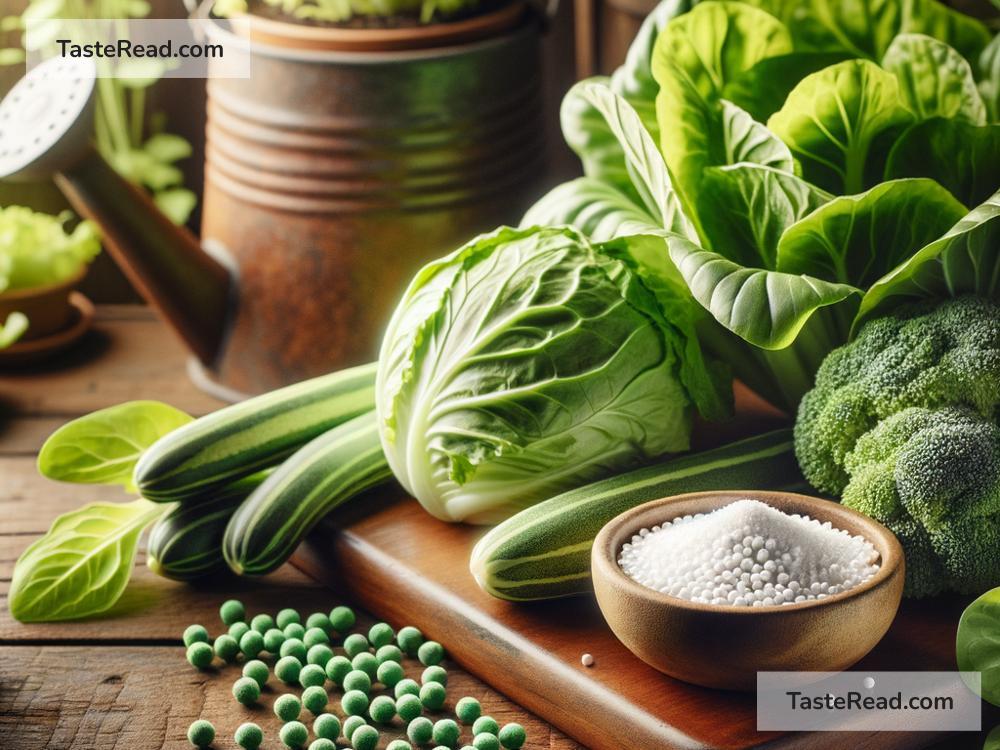The Role of Magnesium in Influencing Vegetable Taste
Vegetables are an essential part of our diets. They are packed with vitamins, minerals, fiber, and other nutrients that are necessary for our health. But did you know the taste of vegetables can be influenced by something as small as a single mineral? Yes, magnesium plays a big role in how vegetables taste. Let’s explore this fascinating connection in simple terms.
What Is Magnesium?
Magnesium is a mineral that exists naturally in soil, water, plants, and the human body. It’s vital for plants because it supports their growth and health. Without magnesium, plants would struggle to produce food, grow properly, or maintain their vibrant green color.
In humans, magnesium is just as important. It helps with energy production, muscle function, and keeping your bones strong. But today, we’re focusing on magnesium’s impact on vegetables, specifically their taste and quality.
Magnesium and Plant Health
Magnesium plays a key role in photosynthesis, the process plants use to make their own food. It’s actually part of chlorophyll, the green pigment that gives plants their color. Chlorophyll captures sunlight and turns water and carbon dioxide into sugar, which the plant uses for energy and growth.
When plants have enough magnesium, they grow healthier and produce more flavorful fruits and vegetables. In contrast, plants lacking magnesium suffer from stunted growth, yellowing leaves, and a poor ability to make food. As you’d expect, unhealthy plants are less likely to develop delicious-tasting vegetables.
How Magnesium Shapes Taste
Magnesium doesn’t directly control taste in the way salt or spices do. Instead, it influences how well the plant performs key processes like photosynthesis and nutrient absorption. When these processes are working properly, the vegetable’s natural flavors become stronger.
Here’s how magnesium contributes to taste in different ways:
1. Sweetness
Magnesium helps plants produce more natural sugars during photosynthesis. These sugars aren’t just food for the plant—they also create sweeter-tasting vegetables. For example, carrots and sweet potatoes depend on magnesium to develop their characteristic sweetness. Without enough magnesium, these vegetables may taste bland or bitter instead.
2. Bitterness
Vegetables like spinach and kale are naturally a little bitter. But when magnesium levels are balanced, bitterness is mellowed out, and flavors become more enjoyable. Too little magnesium in the soil can make these vegetables taste overly sharp or unpleasant.
3. Nutritional Quality
Magnesium allows plants to absorb other nutrients—like potassium, calcium, and nitrogen—that contribute to flavor and nutrition. A magnesium-deficient vegetable might not only taste worse, but it may also have fewer vitamins and minerals.
4. Texture and Aroma
Magnesium improves the overall health of plants, affecting texture and aroma. A crisp, juicy cucumber or tender zucchini results when plants have access to magnesium during their growth.
Can Soil Magnesium Levels Affect Taste?
The quality of the soil where vegetables are grown has a huge impact on their magnesium levels—and therefore their taste. Modern farming sometimes strips soil of nutrients, including magnesium. If soil becomes depleted, plants may not absorb enough magnesium to thrive.
Farmers can fix this problem by adding magnesium-rich materials back into the soil. One common method is using fertilizers like Epsom salt, which contains magnesium sulfate. This boosts the plants’ access to magnesium, improving their taste and productivity.
Organic farming methods, such as composting, also enrich the soil with magnesium and other nutrients naturally. Fresh vegetables grown in healthy, magnesium-rich soil are often tastier than those grown in nutrient-depleted ground.
How Can You Benefit from Magnesium-Rich Vegetables?
To enjoy magnesium’s impact on vegetable taste, focus on eating a variety of fresh, high-quality vegetables. Here are some tips to get the most flavorful and nutritious produce:
-
Buy Local: Vegetables from local farms are often fresher and grown in better soil. Local farmers also have more control over soil health and can ensure their crops have plenty of magnesium.
-
Try Organic: Organic vegetables are often grown in well-maintained soil that’s rich in magnesium and other nutrients. Organic farming avoids harmful practices that deplete soil.
-
Grow Your Own: If you have a garden, you can ensure your soil is healthy and magnesium-rich. Use natural fertilizers and compost to keep the soil balanced.
-
Cook Carefully: Magnesium-rich vegetables are naturally flavorful, so you may not need to add heavy seasonings. Steaming or roasting can help bring out their natural tastes.
Conclusion
Magnesium is a silent hero in the world of vegetables. It helps plants grow, stay healthy, and develop their natural flavors—from sweetness to bitterness and everything in between. Without magnesium, vegetables would not taste as good nor be as nutritious.
Whether you’re a farmer, gardener, or someone who loves fresh vegetables, understanding the role of magnesium can help you appreciate the link between healthy plants and delicious food. So next time you bite into a sweet carrot or crisp cucumber, remember that magnesium might be the secret behind the wonderful taste.


